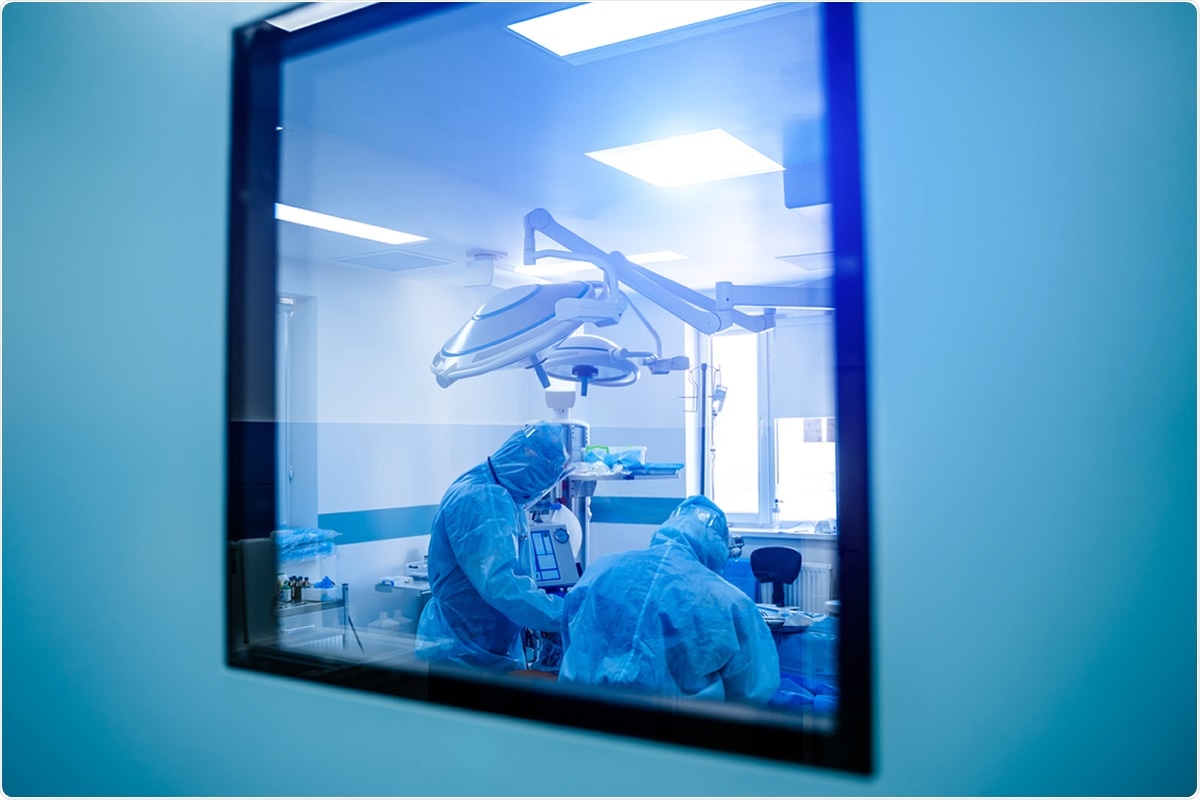Facing COVID-19 patients on ventilators down may cause nerve damage
by Angela Betsaida B. Laguipo, BSNSome people are more likely to experience severe coronavirus disease (COVID-19), caused by the severe acute respiratory syndrome coronavirus 2 (SARS-CoV-2). These include the elderly, people who are obese and have underlying medical conditions, such as diabetes, obesity, heart disease, lung illness, and kidney disease, among others.
People who become severely ill with COVID-19 may need to be admitted to intensive care and hooked to a mechanical ventilator. Now, a new study from researchers at Shirley Ryan Ability Lab and Northwestern University Feinberg School of Medicine has found that severely ill COVID-19 patients on ventilators who are put into a prone position or facing down may suffer permanent nerve damage.

Image Credit: Terelyuk / Shutterstock
Prone positioning
Amid the pandemic, severely ill patients who are infected with COVID-19 are positioned posteriorly to improve oxygenation and decrease respiratory effort. Many countries practice this positioning procedure to reduce mortality among patients.
Physical positioning affects the distribution and volume of air in the lungs, which affect the expansion or collapse of the delicate alveoli that allow the exchange of oxygen and carbon dioxide in the blood. It has long been known that positioning the patient in a supine position or lying on the back can have detrimental effects on underlying the pulmonary function, specifically for patients on mechanical ventilation.
When patients on ventilation are placed on a supine position, the lung is compressed by gravity and other organs. Anatomically, the lungs are located at the posterior part of the thorax. Hence, lying in a supine position will impede adequate lung expansion.
Nerve damage
Though lying in a prone position improves lung expansion and oxygenation of patients, it could lead to permanent nerve damage, according to the study published in the British Journal of Anaesthesia. The researcg was released earlier on the preprint source medRxiv.
"This is a much higher percentage of patients with nerve damage than we've ever seen in any other critically ill population. Ordinarily, very sick people can tolerate the position that helps their breathing. But COVID patients' nerves cannot tolerate the forces other people can generally bear," he added.
The researchers noted that about 12 to 15 percent of the most severely-ill COVID-19 patients have permanent nerve damage. Based on the number of patients infected with coronavirus across the globe, the researchers estimated that thousands of people had been affected.
The team said that nerve damage is the result of reduced blood flow and inflammation. Often, many doctors miss the nerve injury because those who were severely ill are expected to wake up with generalized weakness. Most patients who were bedridden and under ventilation may feel a pattern of weakness in some parts of the body.
However, the researchers observed that COVID-19 patients who were in the ICU experience patterns of weakness during rehabilitation. They noticed that important joints such as the ankle, wrist, or shoulder would be completely paralyzed on one side of the body.
The team has so far examined 20 patients from seven different hospitals who reported the injuries. They wrote that some of the patients had pre-existing conditions, including diabetes, which made them more likely to experience nerve damage from compression. Many of the patients were also obese and old.
The team noted that the most common injuries patients have to include foot drops, wrist drops, frozen shoulder, and loss of hand function. In some cases, patients may have as many as four nerve injury sites, and some people may need assistance in walking with the use of a cane, brace, or wheelchair.
With the nerve injuries, patients who recover from COVID-19 may have long-lasting difficulties in simple tasks, such as walking, and critical hand functions, like operating a computer, writing, or using a cellphone. The team is now working on a pressure map of nerve sensitivity and radiology imaging to determine injuries and skin sensors to identify more appropriate prone position strategies.
Journal reference:
- Franz, C., Malik, G., Wolfe, A., Soriano, R. et al. (2020). Injury-Prone: Peripheral nerve injuries associated with prone positioning for COVID-19-related acute respiratory distress syndrome. British Journal of Anaesthesia. https://bjanaesthesia.org/article/S0007-0912(20)30727-3/fulltext